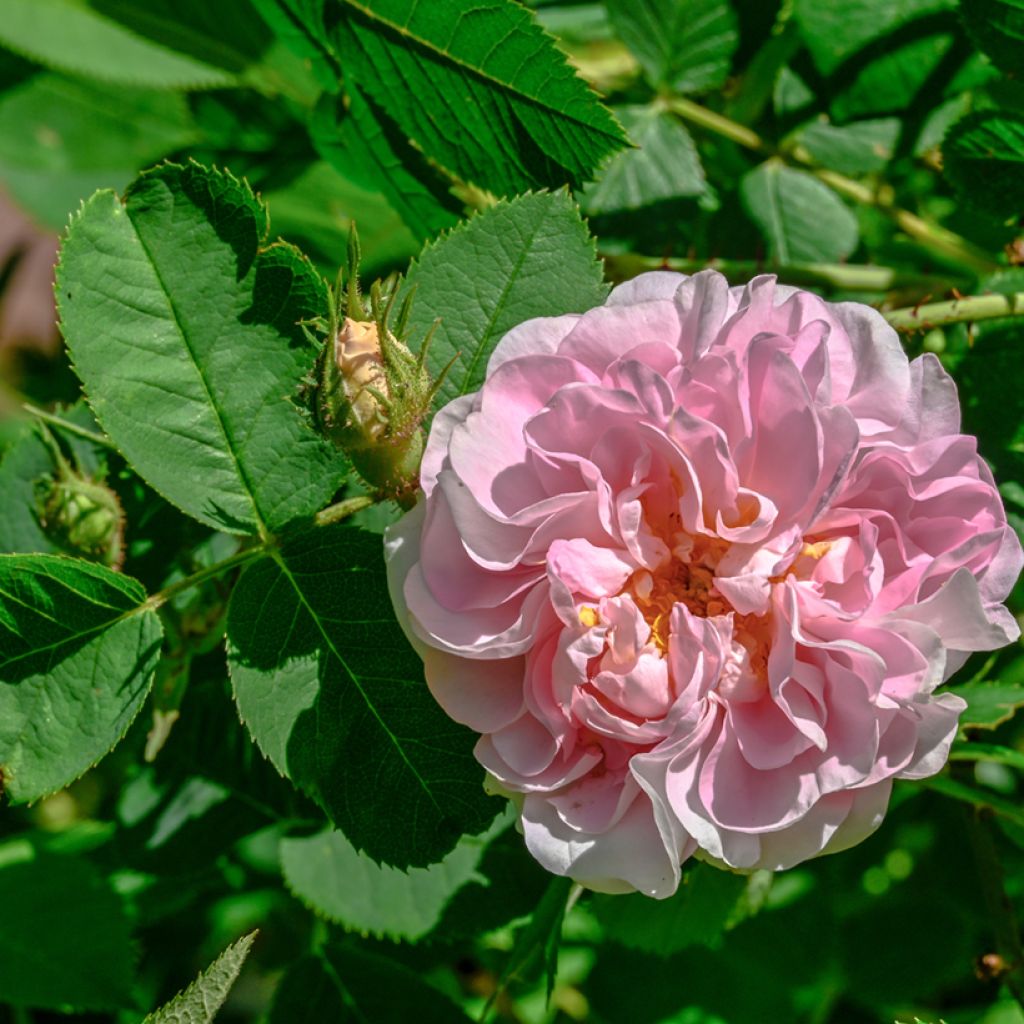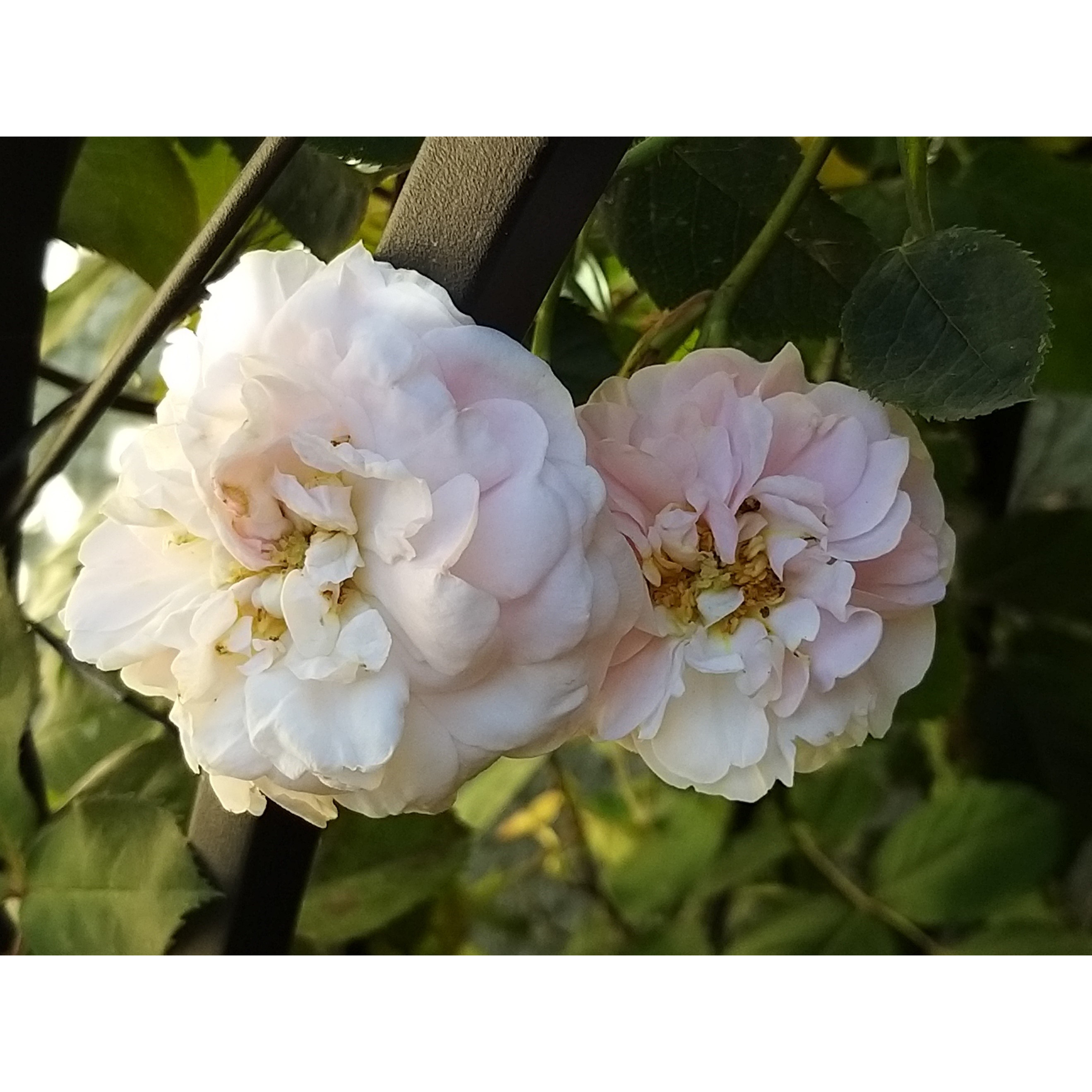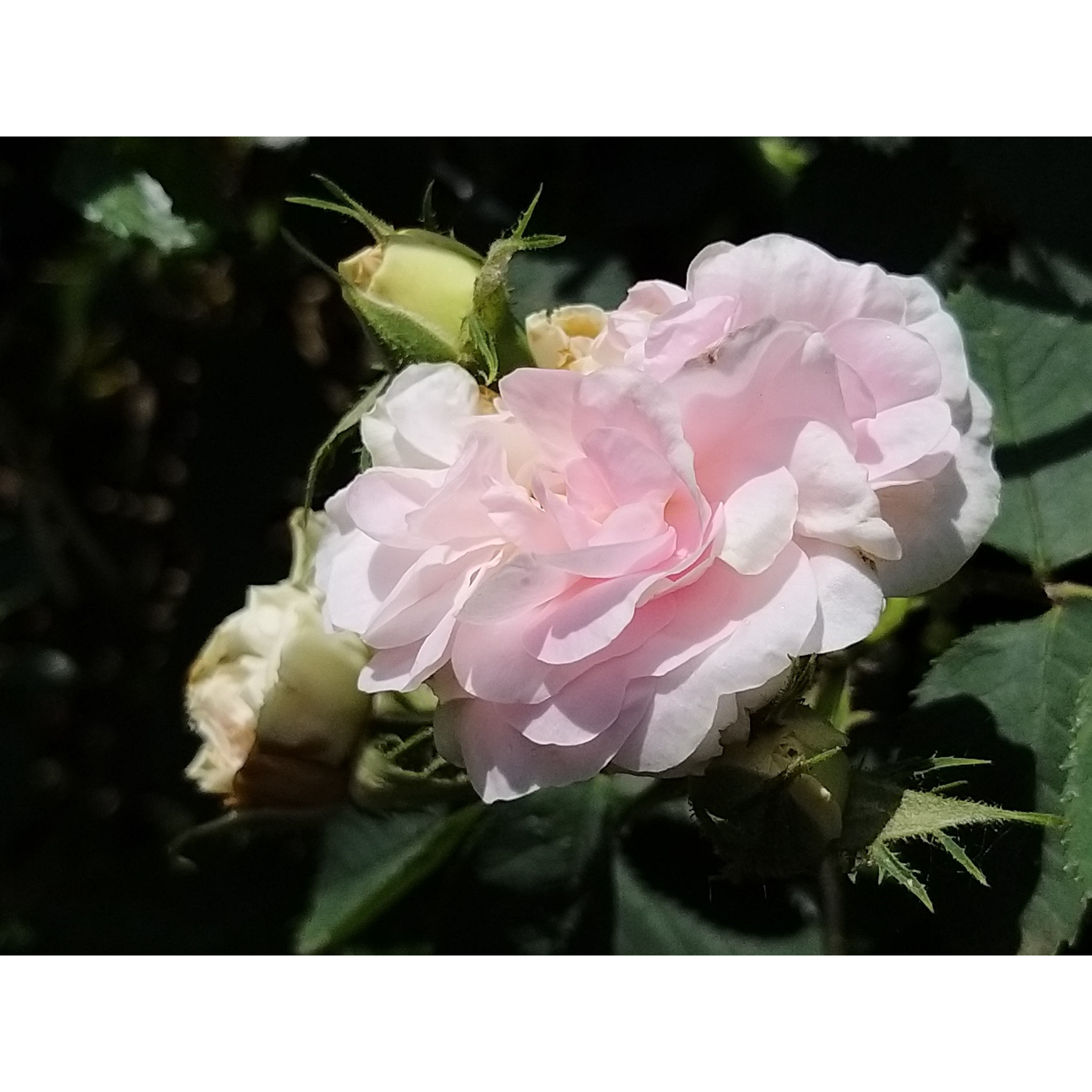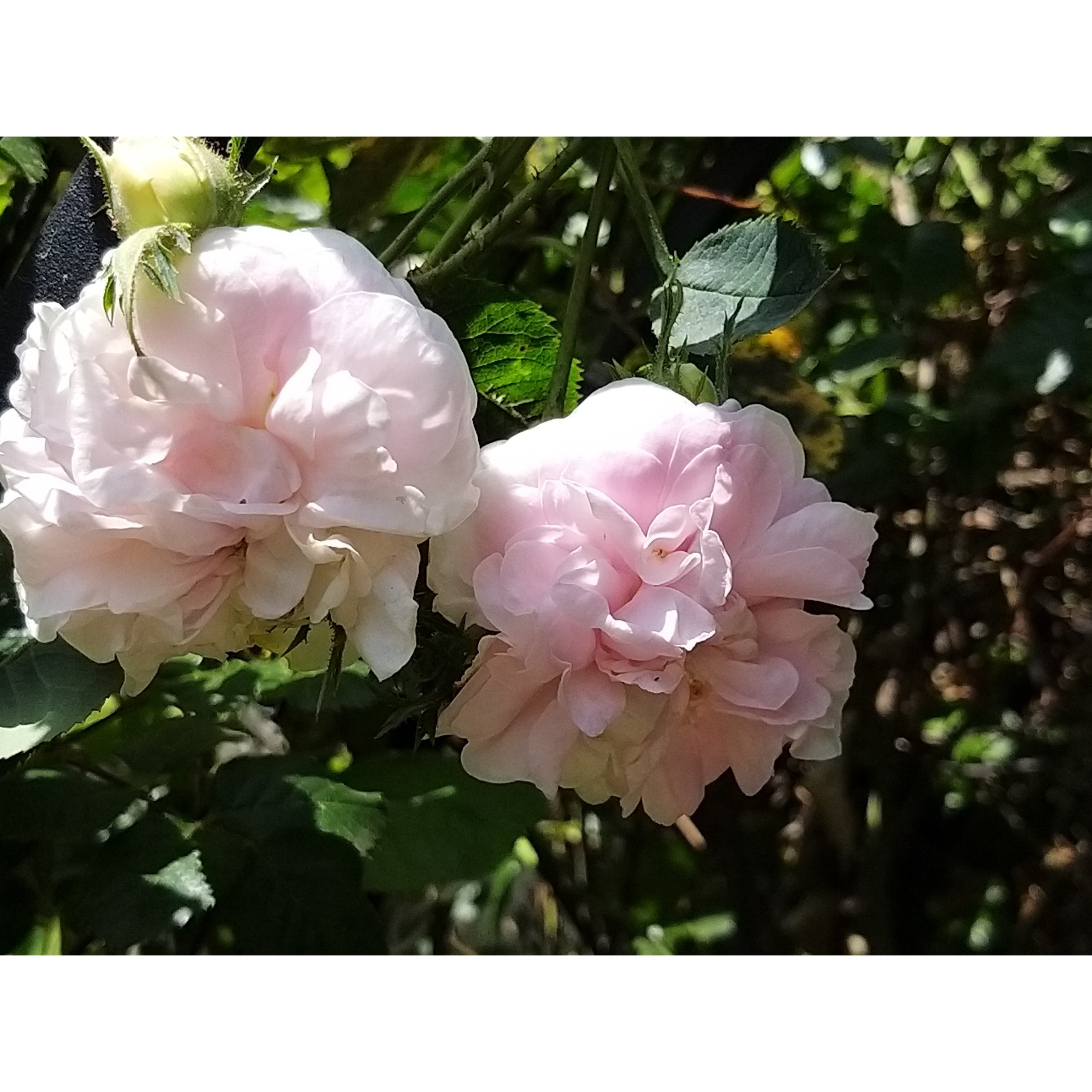

Rosa alba Great Maidens Blush


Rosa alba Great Maidens Blush


Rosa alba Great Maidens Blush
View more pictures
Hide images

Thierry P.

May flowering - image 6
Thierry P. • 84 FR

Thierry P.

Flowering in May - image 5
Thierry P. • 84 FR

Thierry P.

May flowering - image 4
Thierry P. • 84 FR

Thierry P.

May flowering - image 3
Thierry P. • 84 FR

Thierry P.

May flowering - image 2
Thierry P. • 84 FR

Thierry P.

May flowering - image 1
Thierry P. • 84 FR
Rosa alba Great Maidens Blush
Rosa x alba 'Cuisse de Nymphe'
Rose 'Great Maiden's Blush'
Fast delivery, very good condition. Thank you.
Rose , 20/11/2024
Special offer!
Receive a €20 voucher for any order over €90 (excluding delivery costs, credit notes, and plastic-free options)!
1- Add your favorite plants to your cart.
2- Once you have reached €90, confirm your order (you can even choose the delivery date!).
3- As soon as your order is shipped, you will receive an email containing your voucher code, valid for 3 months (90 days).
Your voucher is unique and can only be used once, for any order with a minimum value of €20, excluding delivery costs.
Can be combined with other current offers, non-divisible and non-refundable.
Home or relay delivery (depending on size and destination)
Schedule delivery date,
and select date in basket
We guarantee the quality of our plants for a full growing cycle, and will replace at our expense any plant that fails to recover under normal climatic and planting conditions.

Description
The 'Cuisse de Nymphe' Rose is a historic variety, with controversial origins, but unanimously recognized as one of the oldest hybrids of the white rose (Rosa alba) of the Greeks and Romans. 'Cuisse de Nymphe' forms a harmonious bush with slightly trailing branches, which truly bend in July under the abundance of its summer flowering. Its flowers are small, double, and flattened rosettes, with a white colour touched with carnation pink, and wonderful fragrance. Essential in a garden of antique roses lovers, this original rose is a masterpiece of delicacy set on a vigorous evergreen bush that improves with age, like a vintage wine.
The 'Maiden's Blush' Rose or 'Cuisse de Nymphe', cultivated since time immemorial, now covers several different hybrids of Rosa x alba. We distinguish the 'Grande Cuisse de nymphe', the 'Petite Cuisse de nymphe', the 'Cuisse de nymphe émue'... Some specialists claim that these varieties have long been confused.
'Cuisse de Nymphe' forms a vigorous, well-branched bush with a dense habit, reaching 1.5 to 2 metres (4 feet 11 inches to 6 feet 7 inches) in height (depending on the clones) and 1.2 metres (3 feet 11 inches) in width. Its branches are composed of thorny stems adorned with abundant green-grey-blue foliage, matte, with a villous underside, more or less evergreen depending on the severity of the winter. It is not very susceptible to rose diseases. Its flowering, unique but remarkably abundant, usually takes place in July. On one-year-old branches, clusters of 5 to 7 pretty rounded cream-colored buds form, which open into white flowers, suffused with pink towards the centre. 4 to 6cm (1.6 to 2.4in) wide, they have more or less double cup shapes, opening flat, bubbling and filled with short petals. Their fragrance is very noticeable, in a musky and powdery register. They are followed by the formation of long orange fruits.
The hybrid roses of Rosa x alba are all wonderfully fragrant, with abundant flowering, vigorous growth, and a slightly trailing habit. These shrubs with healthy and ornamental grey-green foliage are very hardy and long-lived. They thrive very well in semi-shaded areas. 'Cuisse de Nymphe' is superb in hedges, flower beds, or as a solitary plant. It tolerates all soils and climates, which allows it to be adopted in all regions. In a large romantic flower bed or a small country hedge, it can be associated with Rosa complicata, so easy to cultivate, or with Rosa x chinensis 'Mutabilis', a multicoloured harlequin, flowering all summer long. In spring, the fragrance and roundness of lilacs, the innocence of mock oranges will accompany its brand new youth, while in summer, Abelias and shrubby cinquefoils will take over. Finally, it is a sturdy and low-maintenance shrub.
If the passion for botanical roses and their direct hybrids is not widespread, it is fully justified, especially in difficult soils or under challenging climates: these roses are not only the ancestors of our modern roses, but also generally more robust and reliable.
Report an error about the product description
Rosa alba Great Maidens Blush in pictures




Plant habit
Flowering
Foliage
Botanical data
Rosa
x alba
'Cuisse de Nymphe'
Rosaceae
Rose 'Great Maiden's Blush'
Cultivar or hybrid
Rosa canina Laxa (Wrapped bare root, 4L/5L pot)
Planting and care
The 'Cuisse de Nymphe' rose, like all alba hybrids, is not demanding in terms of soil type, as long as it is deep enough to accommodate its roots. It is hardy down to -20°C (-4 °F), and can be cultivated even in our regions with harsh climates. It tolerates partial shade well but dislikes waterlogged soils. It is rarely diseased and is not too sensitive to drought once well established. It adapts to all gardens, as long as the planting is taken care of. Plant it in well-worked and properly drained ordinary soil, and in a sunny or partially shaded, or even shaded, position, which it tolerates very well in hot climates.
Roses are often spotted or unsightly at the end of summer, but this is not a problem for their development. These spots are not harmful to the rose, it is a natural phenomenon.
Planting period
Intended location
Care
-
, onOrder confirmed
Reply from on Promesse de fleurs
Haven't found what you were looking for?
Hardiness is the lowest winter temperature a plant can endure without suffering serious damage or even dying. However, hardiness is affected by location (a sheltered area, such as a patio), protection (winter cover) and soil type (hardiness is improved by well-drained soil).

Photo Sharing Terms & Conditions
In order to encourage gardeners to interact and share their experiences, Promesse de fleurs offers various media enabling content to be uploaded onto its Site - in particular via the ‘Photo sharing’ module.
The User agrees to refrain from:
- Posting any content that is illegal, prejudicial, insulting, racist, inciteful to hatred, revisionist, contrary to public decency, that infringes on privacy or on the privacy rights of third parties, in particular the publicity rights of persons and goods, intellectual property rights, or the right to privacy.
- Submitting content on behalf of a third party;
- Impersonate the identity of a third party and/or publish any personal information about a third party;
In general, the User undertakes to refrain from any unethical behaviour.
All Content (in particular text, comments, files, images, photos, videos, creative works, etc.), which may be subject to property or intellectual property rights, image or other private rights, shall remain the property of the User, subject to the limited rights granted by the terms of the licence granted by Promesse de fleurs as stated below. Users are at liberty to publish or not to publish such Content on the Site, notably via the ‘Photo Sharing’ facility, and accept that this Content shall be made public and freely accessible, notably on the Internet.
Users further acknowledge, undertake to have ,and guarantee that they hold all necessary rights and permissions to publish such material on the Site, in particular with regard to the legislation in force pertaining to any privacy, property, intellectual property, image, or contractual rights, or rights of any other nature. By publishing such Content on the Site, Users acknowledge accepting full liability as publishers of the Content within the meaning of the law, and grant Promesse de fleurs, free of charge, an inclusive, worldwide licence for the said Content for the entire duration of its publication, including all reproduction, representation, up/downloading, displaying, performing, transmission, and storage rights.
Users also grant permission for their name to be linked to the Content and accept that this link may not always be made available.
By engaging in posting material, Users consent to their Content becoming automatically accessible on the Internet, in particular on other sites and/or blogs and/or web pages of the Promesse de fleurs site, including in particular social pages and the Promesse de fleurs catalogue.
Users may secure the removal of entrusted content free of charge by issuing a simple request via our contact form.
The flowering period indicated on our website applies to countries and regions located in USDA zone 8 (France, the United Kingdom, Ireland, the Netherlands, etc.)
It will vary according to where you live:
- In zones 9 to 10 (Italy, Spain, Greece, etc.), flowering will occur about 2 to 4 weeks earlier.
- In zones 6 to 7 (Germany, Poland, Slovenia, and lower mountainous regions), flowering will be delayed by 2 to 3 weeks.
- In zone 5 (Central Europe, Scandinavia), blooming will be delayed by 3 to 5 weeks.
In temperate climates, pruning of spring-flowering shrubs (forsythia, spireas, etc.) should be done just after flowering.
Pruning of summer-flowering shrubs (Indian Lilac, Perovskia, etc.) can be done in winter or spring.
In cold regions as well as with frost-sensitive plants, avoid pruning too early when severe frosts may still occur.
The planting period indicated on our website applies to countries and regions located in USDA zone 8 (France, United Kingdom, Ireland, Netherlands).
It will vary according to where you live:
- In Mediterranean zones (Marseille, Madrid, Milan, etc.), autumn and winter are the best planting periods.
- In continental zones (Strasbourg, Munich, Vienna, etc.), delay planting by 2 to 3 weeks in spring and bring it forward by 2 to 4 weeks in autumn.
- In mountainous regions (the Alps, Pyrenees, Carpathians, etc.), it is best to plant in late spring (May-June) or late summer (August-September).
The harvesting period indicated on our website applies to countries and regions in USDA zone 8 (France, England, Ireland, the Netherlands).
In colder areas (Scandinavia, Poland, Austria...) fruit and vegetable harvests are likely to be delayed by 3-4 weeks.
In warmer areas (Italy, Spain, Greece, etc.), harvesting will probably take place earlier, depending on weather conditions.
The sowing periods indicated on our website apply to countries and regions within USDA Zone 8 (France, UK, Ireland, Netherlands).
In colder areas (Scandinavia, Poland, Austria...), delay any outdoor sowing by 3-4 weeks, or sow under glass.
In warmer climes (Italy, Spain, Greece, etc.), bring outdoor sowing forward by a few weeks.
































